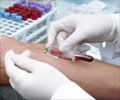There has been a rapid epidemiological shift in hepatitis A virus (HAV) infection as a result of rapid economic development in Korea.
There has been a rapid epidemiological shift in hepatitis A virus (HAV) infection as a result of rapid economic development in Korea.
The adult cases of acute hepatitis A have increased rapidly during the past 10 years due to the emergence of susceptible adults in Korea.After 2000, symptomatic cases of HAV infection markedly increased and the age of affected patients was significantly higher before 2000 than after 2000. This transitional pattern also has been reported in other Asian populations that have similar environmental conditions. A research article be published on March 7, 2010 in the World Journal of Gastroenterology evaluated seroprevalence of total HAV antibody, with large-scale data, and investigated demographic, clinical, and laboratory features of recent cases of HAV in Korea, where there is an ongoing epidemiological shift.
Among 3127 sera tested, 1428 were positive for total anti-HAV antibody. The seroprevalence was very low in patients in their teens or twenties, increased in those in their thirties, and was > 90% in older patients. In children younger than 10 years, seroprevalence was increased again. Most patients with HAV hepatitis were in their twenties and thirties. -glutamyl transpeptidase increased with age and was significantly higher in patients older than 30 years. Indicators of severity, such as decreased albumin and increased bilirubin, were also more prominent in the older age group; however, the leukocyte count was higher and the frequency of leukopenia was lower in the younger group than in older adults.
In the study, seroprevalence increased with age and showed an abrupt rise in patients older than 30 years of age compared to those younger than 30 years. These results are consistent with other recent studies in Korea. This is thought to be due to different epidemiological and socioeconomic environments during the economic development of Korea. Of note, with the recent increase of HAV vaccination in childhood, there has been an apparent epidemiological shift in HAV seroprevalence and a change in the peak age of HAV hepatitis. In the study, most patients with HAV were in their twenties and thirties and most were male. The male predominance was especially true of patients in their thirties, which may be due to more exposure to the virus in men of that age. These cases revealed a severe pattern of acute hepatitis. And the study could provide valuable baseline data of recent hepatitis A in an Asian area with an epidemiological shift.
Source-Eurekalert
RAS















